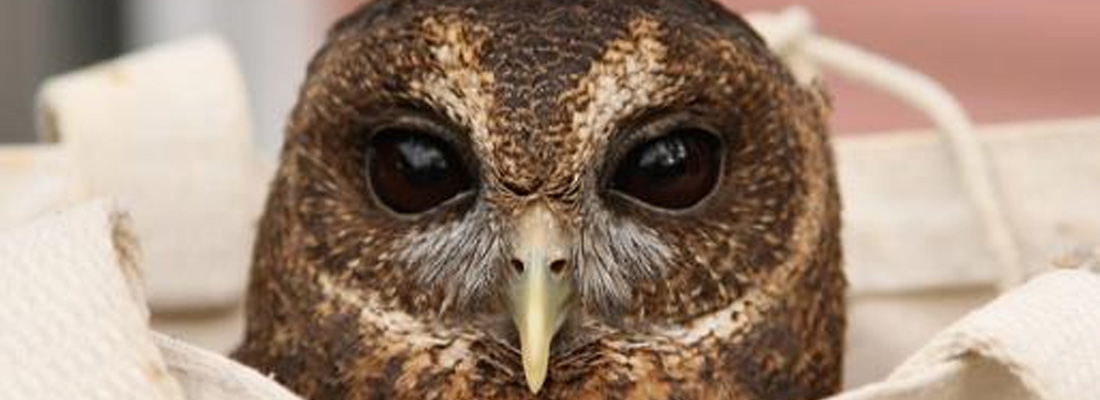Learning Guide
HAWK- The hawk flies during the daytime and possesses eyesight that is from 4-8 times better than a human, enabling it to spot prey from great distances. It has strong legs and sharp talons for grasping, holding and/or killing prey. Its sharp curved beak is used for tearing flesh and ripping prey into smaller pieces.
OWL- The owl has a round head with a flat face. Some owls have moveable ear-like or horn-like feathers that function in camouflage and display. They can hunt by sound but only in a quiet environment. Most owls hunt at night and are well adapted to catching prey in the dark with their large, specialized eyes. Owl feathers have a soft comb-like leading edge and a fuzzy upper surface that effectively muffles sounds as the feather moves through the air and against other feathers. The owl has strong feet and talons along with a sharp curved beak like the hawk. Each day the owl coughs up one or two pellets of indigestible material, such as fur and bones.
VULTURE- The vulture's adaptations revolve around cleanliness since it feeds on dead or decaying carcasses. It has a bare head so that there are no feathers to become soiled when it puts its head in carcasses. The vulture has excellent resistance to the microbes and toxins found in decaying flesh. It defecates on its legs, which is said to kill germs that accumulate there while standing on dead carcasses. Spraying feces on its legs and feet also is useful for evaporative cooling. It has large nostrils that won't get clogged up when its head is in a carcass. For self-defense it regurgitates when frightened.
For children's activity books about vultures please visit the following web sites:
A Hawk Mountain Activity Book for Children
Vulture Theme Preschool Activities and Crafts
Vulture Paper Craft - DLTK's Crafts for Kids
FALCON- The falcon is a compact, fast flying, daytime flying bird of prey with long, pointed wings. It is built for speed. It is well adapted to fast, twisting maneuvers and high-speed dives in pursuit of live prey, which it can pluck out of the air with long toes and needle sharp talons. A falcon can dispatch its prey by biting through the neck and breaking it: their beaks have a specialized tooth-and-notch structure for this purpose that is visible at close range. Most falcons have a dark line under each eye to reduce sun glare. The falcon has a round peg in the center of each nostril, which is thought to be for disrupting airflow to allow breathing at high speeds.
Certain vocabulary words may be used during the program that may be new for some individuals. These words are normally explained during the program, but it might be useful to review them. Since the programs are always adapted to the age level of the audience, some of these words may not always be used.
1.- CROP- An elastic sac in the neck of some raptors for storing extra food.
2.- ENDANGERED SPECIES- Any plant or animal whose numbers are declining to a dangerous level. There is a Federal endangered species list as well as a state endangered species list. The Peregrine falcon has been removed from the Federal endangered species list.
3.- FALCONRY- The ancient sport of hunting with a trained bird of prey
4.- HABITAT-The type of environment in which a species lives. The habitat of a Peregrine falcon is out in the open on a cliff.
5.- HIBERNATION- Some animals remain in a dormant state over the winter. Snapping turtles, for example, hibernate at the bottom of lakes and ponds.
6.- IMPRINTING- When a baby bird is raised by people, it assumes the humans are its real parents. These birds are very tame. Some of the birds used in the program are imprinted birds.
7.- INSECTICIDE- A poison to kill insects. Years ago we used dangerous insecticides (such as DDT), which was responsible for the decline of peregrine falcon populations. The Federal government now bans these dangerous poisons.
8.- JESSES- The leather straps on the hawks legs which we hold onto in case the bird tries to fly when we don't want it to.
9.- LURE- A lure is something that attracts an animal. The alligator snapping turtle uses its pink, worm-like tongue as a lure to attract fish to its mouth.
10.- MOBBING- The behavior of crows and other birds when they discover a predator like an owl. They fly over the owl's head while screaming and diving at it.
11.- NOCTURNAL- Creatures that are active at night.
12.- PREDATOR- Any creature that hunts and catches prey in order to survive.
13.- PREY- The animal being hunted by the predator
14.- TALONS- The strong sharp claws on the toes of a bird of prey
15.- SCAVENGER- An animal, such as the vulture, that feeds on dead animals that it finds.
